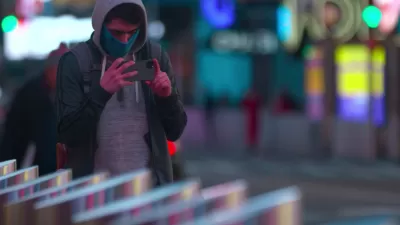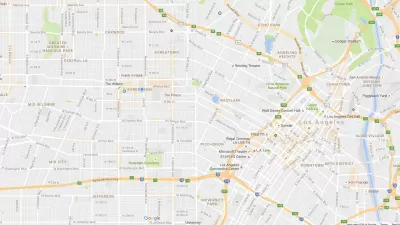Are smartphones supplementing the capacity of humans to think spatially, such that future generations might lose fundamental cognitive abilities?
"The rise in mobile navigation technology has, in just a few years, transformed the way we get around cities," writes Henry Gabar. "In 2011, 35 percent of Americans had smartphones; by 2013, that had grown to 61 percent." Moreover, "[three]-quarters of those people now use their phones for directions and location-based services. One in five Americans used the Google Maps app in June; one in eight used Apple Maps. Tens of millions more rely on car-based modules hitched to the satellites of the Global Positioning System."
The question pondered by Gabar is whether humans stand to lose very valuable brainpower in letting their phones take over so much navigation work. "Experts who study the issue are concerned that spatial thinking might be the next casualty of technological progress, another cognitive ability surpassed and then supplanted by the cerebral annex of the Internet….They worry we may become, as a society, what the Japanese call hōkō onchi—deaf to direction."
The longish-read article includes comparisons to the advancements in 19th century cartography that inspired similar fears at the time, as well as the counter argument that the rich data and context-filling capabilities of contemporary maps could actually increase spatial consciousness.
FULL STORY: Smartphones and the Uncertain Future of 'Spatial Thinking'

Study: Maui’s Plan to Convert Vacation Rentals to Long-Term Housing Could Cause Nearly $1 Billion Economic Loss
The plan would reduce visitor accommodation by 25,% resulting in 1,900 jobs lost.

North Texas Transit Leaders Tout Benefits of TOD for Growing Region
At a summit focused on transit-oriented development, policymakers discussed how North Texas’ expanded light rail system can serve as a tool for economic growth.

Why Should We Subsidize Public Transportation?
Many public transit agencies face financial stress due to rising costs, declining fare revenue, and declining subsidies. Transit advocates must provide a strong business case for increasing public transit funding.

How Community Science Connects People, Parks, and Biodiversity
Community science engages people of all backgrounds in documenting local biodiversity, strengthening connections to nature, and contributing to global efforts like the City Nature Challenge to build a more inclusive and resilient future.

Alabama: Trump Terminates Settlements for Black Communities Harmed By Raw Sewage
Trump deemed the landmark civil rights agreement “illegal DEI and environmental justice policy.”

Dear Tesla Driver: “It’s not You, It’s Him.”
Amidst a booming bumper sticker industry, one writer offers solace to those asking, “Does this car make me look fascist?”
Urban Design for Planners 1: Software Tools
This six-course series explores essential urban design concepts using open source software and equips planners with the tools they need to participate fully in the urban design process.
Planning for Universal Design
Learn the tools for implementing Universal Design in planning regulations.
City of Santa Clarita
Ascent Environmental
Institute for Housing and Urban Development Studies (IHS)
City of Grandview
Harvard GSD Executive Education
Toledo-Lucas County Plan Commissions
Salt Lake City
NYU Wagner Graduate School of Public Service





























